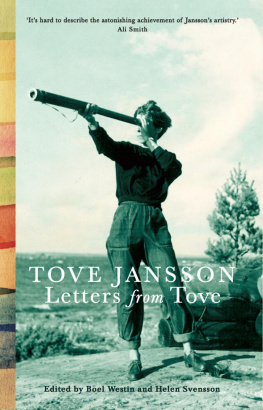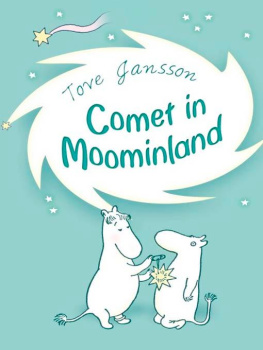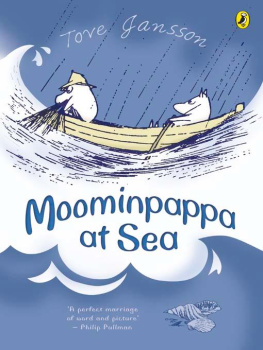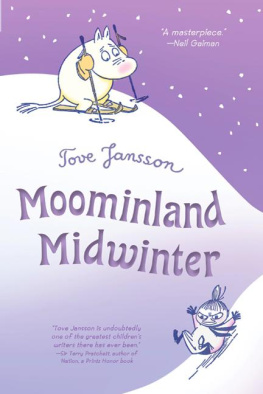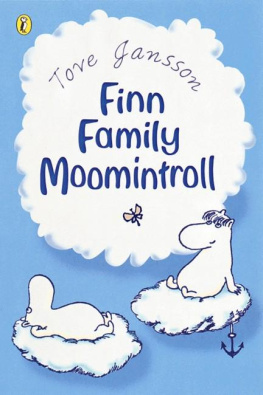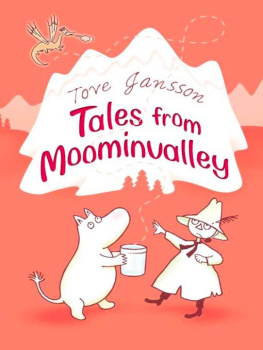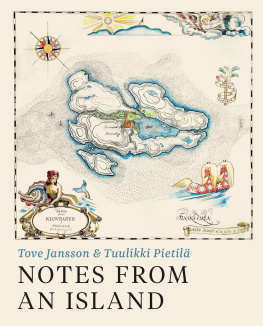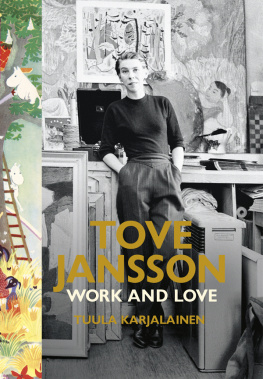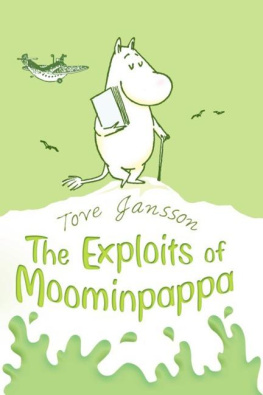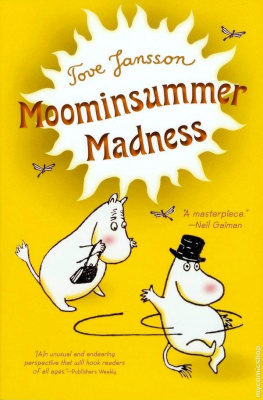Tove Jansson - Sculptors Daughter
Here you can read online Tove Jansson - Sculptors Daughter full text of the book (entire story) in english for free. Download pdf and epub, get meaning, cover and reviews about this ebook. genre: Art. Description of the work, (preface) as well as reviews are available. Best literature library LitArk.com created for fans of good reading and offers a wide selection of genres:
Romance novel
Science fiction
Adventure
Detective
Science
History
Home and family
Prose
Art
Politics
Computer
Non-fiction
Religion
Business
Children
Humor
Choose a favorite category and find really read worthwhile books. Enjoy immersion in the world of imagination, feel the emotions of the characters or learn something new for yourself, make an fascinating discovery.
- Book:Sculptors Daughter
- Author:
- Genre:
- Rating:5 / 5
- Favourites:Add to favourites
- Your mark:
- 100
- 1
- 2
- 3
- 4
- 5
Sculptors Daughter: summary, description and annotation
We offer to read an annotation, description, summary or preface (depends on what the author of the book "Sculptors Daughter" wrote himself). If you haven't found the necessary information about the book — write in the comments, we will try to find it.
Sculptors Daughter — read online for free the complete book (whole text) full work
Below is the text of the book, divided by pages. System saving the place of the last page read, allows you to conveniently read the book "Sculptors Daughter" online for free, without having to search again every time where you left off. Put a bookmark, and you can go to the page where you finished reading at any time.
Font size:
Interval:
Bookmark:
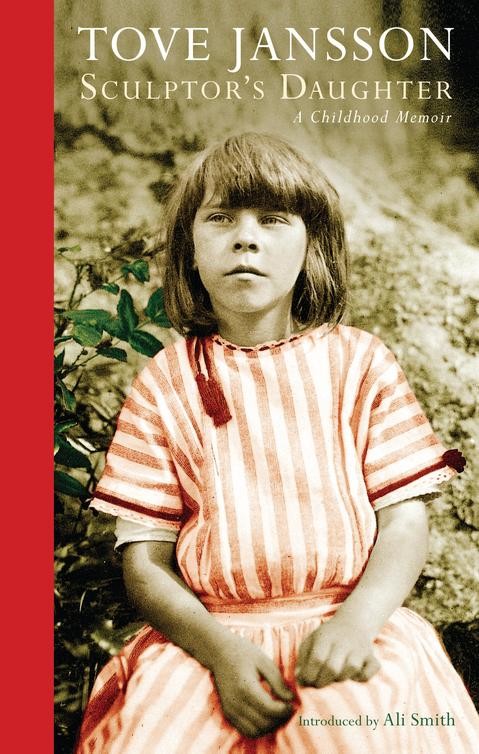
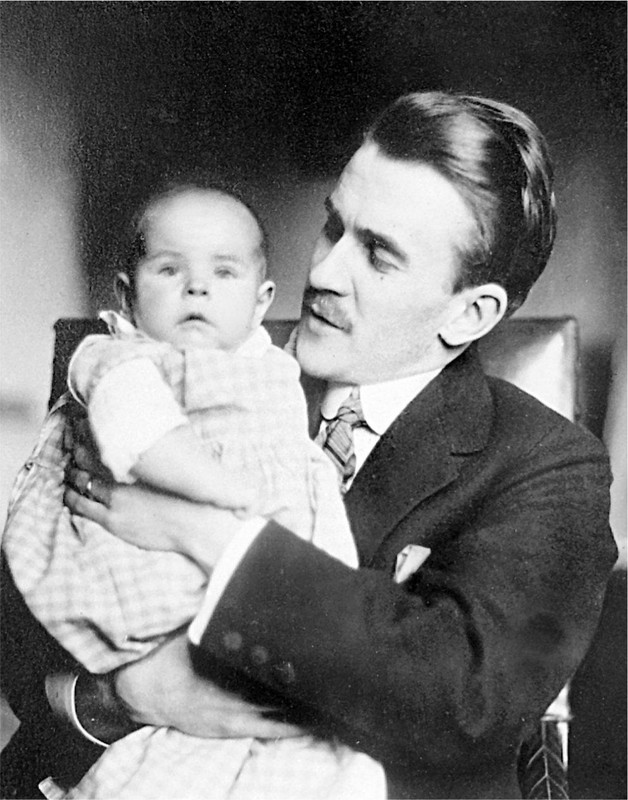
Daughter
A CHILDHOOD MEMOIR
Tove Jansson
with an introduction by
Ali Smith
translated by
Kingsley Hart

- Title Page
- Introduction by Ali Smith
- The Golden Calf
- The Dark
- The Stone
- Parties
- Annie
- The Iceberg
- The Bays
- Flotsam and Jetsam
- Albert
- High Water
- Jeremiah
- Dressing Up
- Pets and Females
- The Spinster Who Had An Idea
- The Tulle Skirt
- Snow
- German Measles
- Flying
- Christmas
- A note on the photos
- Also by Tove Jansson, published by Sort Of
- Tove Jansson
- Copyright
by Ali Smith
A SMALL CHILD IS DIGGING A HOLE in one of the walls of the city apartment she lives in with her parents. Its solitary work, but shes already got quite a long way the wooden panelling went all right but then I had to use the marble hammer. Luckily her father is a sculptor so she has the tools to hand; in fact the hole shes digging is in his studio wall.
Shes making a secret tunnel in a story called The Dark, because danger, when youre a child, lies in wait everywhere. After youre born pretty much everything is dangerous, the child announces at the end of this story, which begins with a nightmarish landscape a too-gothic church, foul jagged rubbish glinting everywhere, locked doors, a house with no windows and goes on to transform an innocent visit to the ice rink into the worst thing of all, a vision of existentialism in which hundreds of shadowy figures skate round and round, all in the same direction, resolutely and pointlessly.
The pile-up of terrifying images not just dark ice and Scandinavian gloom, but snakes, monsters, a visit to the waxworks where you can see how easy it is to smash people to pieces crushed, torn in half or sawn into little bits becomes grist to the mill in a piece which turns into a childrens game, funny and fast, moving at the speed of light and transforming danger into something exhilarating, the child ricocheting in near-euphoria between the joy and the fear of feeling anything at all.
But theres something else, something other than this game, at the heart of it. Her father isnt the only artist in the house, her mother is one, too; the child, descended from art, is hiding her escape tunnel behind a wall-hanging of a painting her mother made when she was young, of evening light in a wood, and when the child looks at this painting she knows that theres an even more intense state of feeling possible, something more powerful than self-torture and frenetic destruction, more powerful even than going into hiding.
Everything except the sky has gone dark in a vague greyish brown but there are narrow red streaks that burn like fire. I love her picture. It goes deep into the wall, deeper than my hole it goes on endlessly and one never gets to the place where the sun is setting but the red gets more and more intense. Im sure its burning!
Art and life, light and dark, childs play and deadly seriousness, hilarity and despair, creativity and existential cataclysm, and all of these oppositions held simultaneously and brought to work together: this is Tove Jansson territory. More, Sculptors Daughter, originally published in Finland as Bildhuggarens Dotter back in 1968, could be said to be closer to home for Tove Jansson than any of her other fictional works.
TOVE JANSSON WAS BORN in Helsinki in 1914 into an avowedly artistic family. Her father, Viktor Jansson, was a Finnish sculptor and her mother, Signe Hammarsten-Jansson, or Ham to her children, was Swedish, an illustrator, graphic designer and caricaturist, and a career woman who eventually designed Finnish postage stamps, watermarks and banknotes. For Ham, art was work and work was money, especially since there wasnt much sure money in sculpture. Tove, born in July 1914 on the eve of the First World War, was a professional artist and writer herself as early as her mid-teens.
She began the first of the series of books for children that would make her internationally famous, the books about the Finn Family Moomintroll, in the middle of yet another war, publishing it in 1945; the story goes that she wrote and drew The Moomins and the Great Flood, a work centred on innocence and naivety, consciously to dispel some of the foulness, darkness and depression of the Second World War years.
The Moomins and the Great Flood, only very recently published in English for the first time, is a book of darkness, mud and storms, where a mother and child, travelling to find both a home and the familys father, light their way with a tulip, find sun and hospitality and befriend many creatures on their journey. At one point they set sail using an armchair for a boat:
Go carefully! cried the small creature. He was sitting on the backrest and looking around, for it had occurred to him that they might find something valuable floating in the water after the flood. For example a casket full of jewels. Why not? He kept a sharp watch, and when he suddenly saw something gleaming in the water, he shouted loudly with excitement. Go that way, he cried. Theres something shining over there.
Its only an old bottle, not treasure at all, but of course theres a message in it. One of Janssons own repeated messages-in-a-bottle to us over the course of a lifetime of art and writing seven decades of work (she died in 2001), for people of all ages is that therell always be treasure gleaming somewhere in what you salvage, and itll probably be unexpected.
The phrase less is more might have been coined specifically for an aesthetic practice like Janssons. She was a consummate editor, a composer of prose so tightly disciplined that the end effect is somehow universal and cornucopic. In Janssons work, smallness, and attention to the smallest detail, most often leads her reader to something more like epic in understanding; and matters and practices in art and in prose are always, for her, related to matters of living and surviving. As the child puts it in the story called Flotsam and Jetsam in Sculptors Daughter, a story about all sorts of salvage and surprises as well as how to live communally and graciously in a wild and stormy world, one mustnt have a single unnecessary thing in a boat.
SCULPTORSDAUGHTER WAS WRITTEN ten years after the death of Janssons father, when her mother was 86 (Ham died in 1970). By now Jansson was working towards what would be the last, the darkest and the wintriest of the Moomin books, Moominvalley in November. I want to write something new, she told her partner, the graphic artist, Tuulikki Pietil, in fully adult mode yet about what is still a small world. Sculptors Daughter was the first of a dozen texts that Jansson would write specifically for adults rather than children, an important book in this transition for her, a threshold work; the next thirty years of her life would be devoted to fiction for adults.
Since the republication of her 1972 novel The Summer Book in the UK ten years ago, a steadily growing readership here has seen several of Toves works (and there are many more to come, which is tremendously exciting) become available in English, often for the first time. Each of these discoveries or rediscoveries is itself a sort of surprise, a fresh illumination of the quiet brilliance of Janssons aesthetic. Now, as we approach the centenary of her birth in 2014,
Next pageFont size:
Interval:
Bookmark:
Similar books «Sculptors Daughter»
Look at similar books to Sculptors Daughter. We have selected literature similar in name and meaning in the hope of providing readers with more options to find new, interesting, not yet read works.
Discussion, reviews of the book Sculptors Daughter and just readers' own opinions. Leave your comments, write what you think about the work, its meaning or the main characters. Specify what exactly you liked and what you didn't like, and why you think so.


